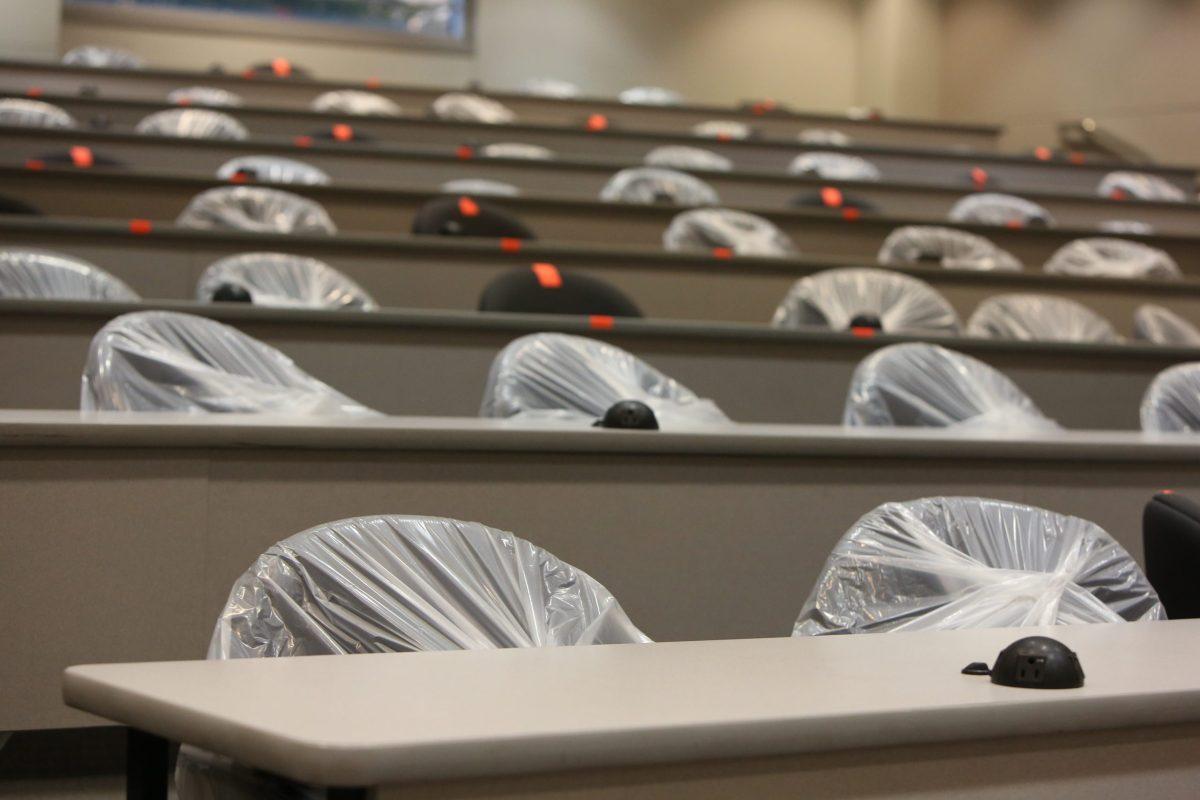123 classes at UTD were offered in-person this semester, but next semester is promising a slightly decreased availability of 114 in-person classes.
According to a survey conducted by The Mercury, 10 percent of students will be attending in-person classes, while the other 90 percent either did not have the choice or opted for a different format. For the minority of students that will be attending spring classes in person, that option was made available by only a handful of professors.
Political science professor Ryan Lux is one such example. Some of his classes like State and Local Government were conducted in a hybrid format this semester, but next semester he will be teaching Comparative Politics in the traditional in-person mode. Given the choice, Lux prefers in-person classes to online classes.
“I feel that students are more engaged in the classroom in-person,” Lux said. “I can gauge their responses when I’m lecturing, I can see how you’re responding to what I’m saying. If I can tell from the class that you’re not understanding, I could spend more time on that topic. If I tell that you’re getting it quite well, we can move on to the next issue much easier than I can on a Teams meeting, where you may not even have your camera on, and so I can’t really gauge your response.”
The in-person format not only benefits professors, Lux said, but students as well: when classes are held in-person, there’s a higher level of engagement and accountability.
“I’ve noticed when I look at some of the students [attending class online], they’re not accessing the lectures. They’re not actually going back and watching the Stream later or actively engaging in the class, and that has a negative outcome on the grades for those students,” Lux said. “For the students that I see in person, that are in my classroom — and then to some degree, those that are even on Teams as well — you still see that active engagement and the students seem to understand the concepts better.”
With in-person classes, however, the risk for COVID-19 exposure increases. To account for this, Lux requires all of his students to wear masks and maintain a six-foot distance. Regardless of his preferences, Lux said that everyone deserves the chance to evaluate whether online or in-person classes are best for them.
“Whether you’re the professor or student, you need to look at your own situation and determine whether or not you think this will move you forward better in one way or another,” Lux said. “That’s what I’ve done in my classes, and that’s what I encourage my students to do as well.”
Physics professor Phillip Anderson also prefers in-person classes and said he used to have more engagement outside of lectures before COVID-19.
“I don’t have anywhere close to the number of students that attend my office hours that I would have if it were in-person,” Anderson said. “I mean, when I did [have classes in-person], every office hour, I had a student come in and talk to me. Now about every third office session, a student will actually come.”
With online classes, Anderson said he is missing the part of teaching that he enjoys most: being able to interact with students. Yet, despite current circumstances, Anderson said he approves of how the university is handling the situation.
“We want to give the students all access that we can,” Anderson said. “I’m giving the opportunity for them to come into class. I’m taping my lecture so they can do this asynchronously, and I’m doing this synchronously. So we’re giving the students every opportunity to get the proper education.”





